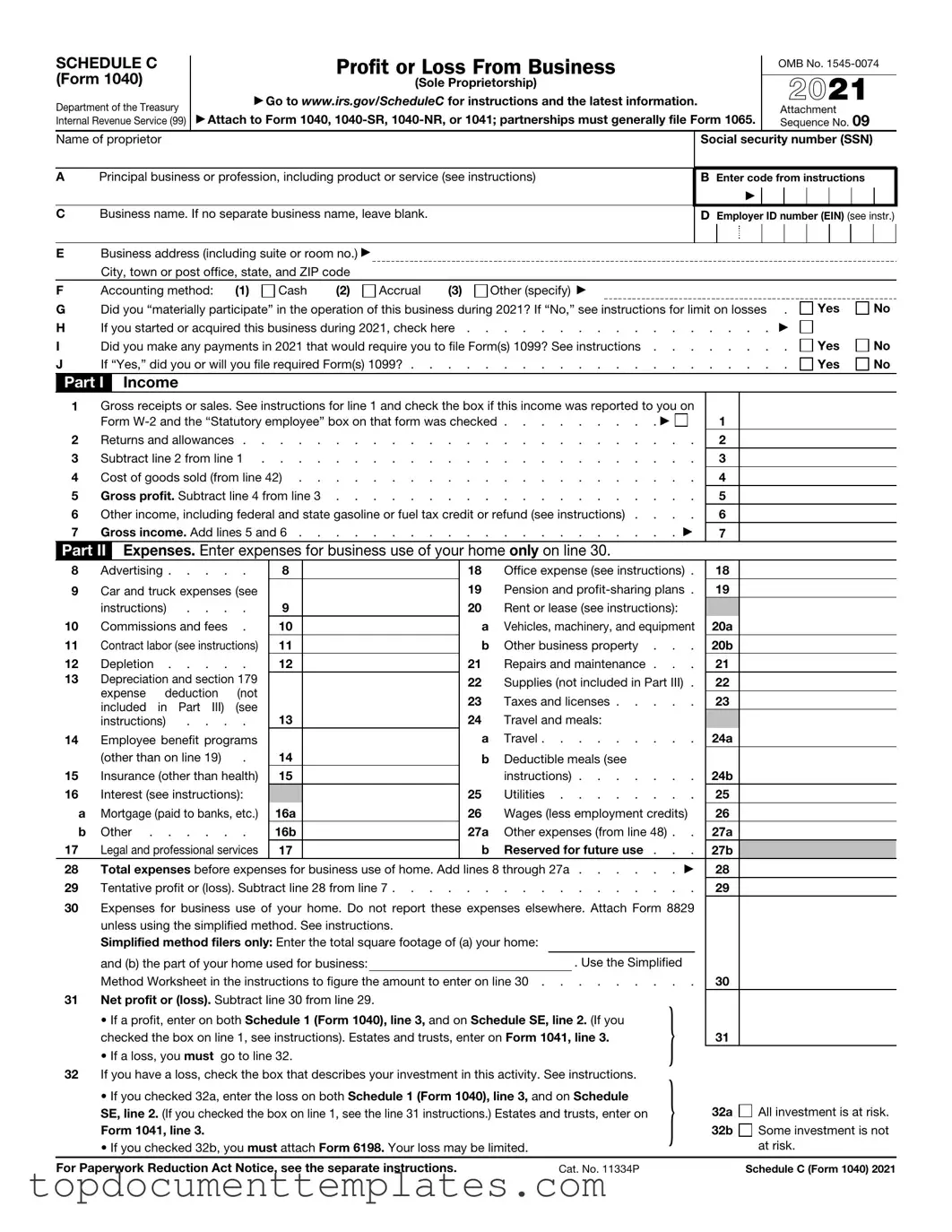Blank IRS Schedule C 1040 PDF Form
The IRS Schedule C 1040 form is a tax form used by self-employed individuals to report income and expenses from their business activities. This form allows taxpayers to detail their earnings and claim deductions for various business-related costs, ultimately affecting their taxable income. Understanding how to accurately complete this form is essential for any entrepreneur or freelancer looking to ensure compliance with tax regulations.
Ready to fill out your Schedule C form? Click the button below to get started!
Open This Form
